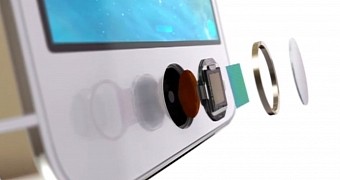The Retina MacBook Pro has been the same since May 2015. The same design, the same hardware, and it only got some incremental software updates with OS X every year.
The iMac has not received anything new since October of 2015. I don't even want to mention the MacBook Air, the Mac Mini or the Mac Pro. To have the same hardware and design for more than 3 years in a row feels un-Apple-like.
In the meantime, the iPhone was changed every year, and the iPad has a bigger brother. The guys over at Cupertino have a few excuses, but do they really hold water?
Software doesn't make it new, especially with macOS
Apple will soon drop the OS X for macOS. The new name doesn't bring spectacular changes to old hardware. Sure enough, we will get Siri and some implementations that will take more of our stuff to the cloud. However, Apple seems to be trying to teach an old dog new tricks.
Siri had been on iOS long before it came to the Mac. What took them so long? Well, first of all, the computers have far too many apps, so the virtual personal assistant needed to learn about all of them. Siri can locate your files, open apps, find stuff online, and this may be the future of computing.
macOS Sierra will also bring Apple Pay to the web and a nice way to log into your computer with the Apple Watch. These are all great, but it seems like the Mac would benefit more if it added some hardware features.
Secure everything with your thumb
Apple has something really useful in its iPhone and iPad: touch ID. Why would you touch the home button of a phone to pay or depend on the watch to unlock your computer when you can have all that in the trackpad?
Imagine the trackpad could become a giant trackpad. It is made of glass anyway, so turning it into something that can sense your fingerprint could be easy. After all, you keep your fingers on it most of the time. If this is too much to ask, maybe Apple can incorporate a touch-sensitive area on the side of the MacBook (Pro) so that we can get the same functionality.
This can be really useful beyond the Apple Pay and unlocking your computer. macOS already has all your passwords stored in the iCloud Keychain, and it all syncs to your iPhone. How about having Safari use your passwords and log into websites just by reading your fingerprint? There would be no need to remember complex usernames and passwords. Just type the URL, and then rest your index finger or thumb on the trackpad and let the hardware and software do their magic.
If you do not trust Safari or want to have the same functionality in other browsers, just use something like 1Password or LastPass, and have your fingerprint assigned as the master password. How about using that in apps? There is no need to stay logged into 3rd-party apps or secure the whole OS with FileVault. Your fingerprint is all you need to have everything working.
Apple has developed the touch ID sensor to such a degree that it can implement it on any device. The Secure Enclave could be hidden somewhere in a chip on the motherboard so that your information stays safe.
Fewer buttons, more functionality
When the first iPhone came out, the big screen was seen as the perfect replacement for the keyboard. You could use the same physical space to have a virtual keyboard and change the buttons according to your needs, in every app or screen.
Having a virtual keyboard on the Mac is not something a pro-user would want. Nor a touch screen, but there have been rumors about Apple replacing the function keys row with an old bar that can change appearance to match the information on the screen.
Let's say you are on iTunes. You get a button to play the music, skip to the next song or switch to another playlist. In Adobe Photoshop, you could be changing tools so that you don't have to leave the keyboard, go to the trackpad and point the cursor to that menu.
Who uses Launchpad or the Dashboard anymore via the F3 and F4 buttons? The latter is not even officially part of the OS, but the 2012 MacBook Pro still has a dedicated button. Learning from the iPhone and taking that to the Mac can be a great improvement.
Also, the new Messages app on the Mac can only read animated iMessages coming from the iPhone. This calls for a new kind of trackpad that can be used by the owner of the computer to create those animations. On the other hand, maybe it is better this way, and we do not really need to make iMessages more complicated on the computer.
Connectivity for the Mac
The Mac needs to be future-ready. With the announcement of the 5G network, high Internet speeds do no rely on WiFi only. Future computers will seem too slow if they do not include a 5G or LTE chip. Sure enough, this will drain the battery much faster, but the pros of having a mobile broadband connection on your computer are more important than the cons.
On the other hand, if there is one thing that the iPhone could borrow from the Mac, it would be the MagSafe adapter. Apple needs to stick to that when it comes to power. The USB type-C connector is good to the point where someone yanks your computer off the desk.
I really hope all of this will be included in the future version of the MacBook Pro, and Apple will also take care of the Mac Pro and the iMac. The Mini may be on its last legs unless the Magic Keyboard truly becomes magic and adds all of the above features.

 14 DAY TRIAL //
14 DAY TRIAL //